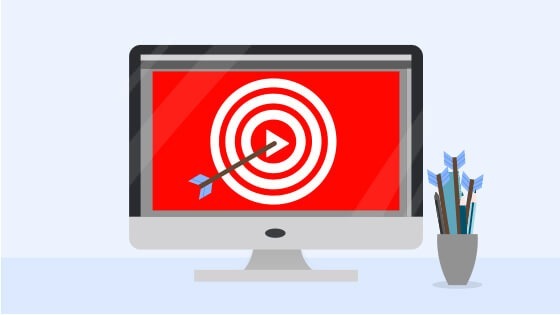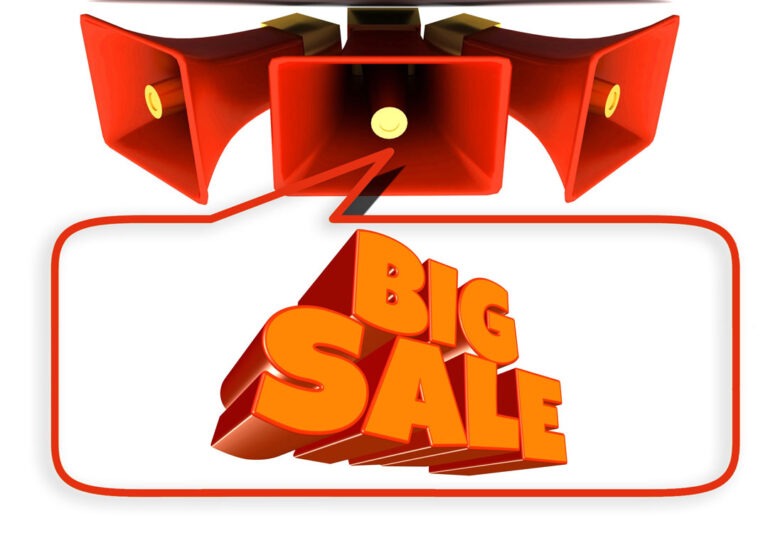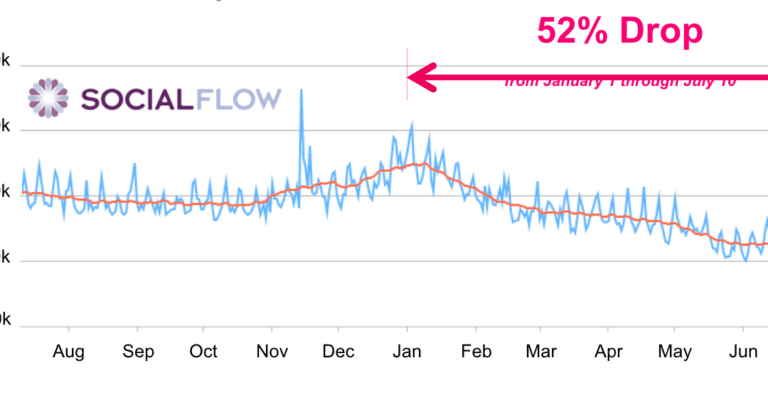6 Tips for Keeping Your Viral Video On-Brand

I hope you enjoy this blog post. If you want Hello Bar to grow your leads, click here.
Author:
Ryan Bettencourt
Published
April 22, 2019

In the digital era, videos are one of the most popular and effective tools for spreading brand awareness — and that’s not just an opinion, according to the most recent data from 2019:
- Video marketing increases revenue 49% faster than non-video campaigns.
- Brands that use videos receive 41% more traffic than those that don’t.
- Videos on social media generate 1,200% more shares than text and pictures.
- Adding videos to emails increases the click-through rate by 200 – 300%.
- Adding a video on your home page increases your conversion rate by 20%.
- Adding a video to your landing page can increase conversions by 80%.
But if your video goes viral, what exactly are you spreading? No matter how many views it gets, a video production is only successful if it’s a reflection of your brand. Brand videos and explainer videos don’t just outline your services and features, they also communicate your brand personality and style, which can be just as effective for conversions as more pragmatic value points.

You already know how to make a viral video thanks to Neil Patel, but here we explain how to make your viral video. Below are 6 tips for keeping your viral videos on-brand.
Instant Recognition: What Makes You You?
We talk a lot about “brand awareness,” but what does it mean to be aware of a brand? Knowing that the brand exists? Knowing their colors or mascot’s name? Knowing the company’s value points and what makes their business unique?
Unlike other online videos, brand videos are about promoting your business — it’s not always about the sheer number of likes and clicks, but rather about planting the seeds of who you are so people think of you next time they need deodorant, a new computer, or a cheap airline ticket.
Being remembered requires being unique — just think about what kinds of people leave an impression on you the morning after a dinner party. A good brand video shows off a brand’s unique personality, not just with what it says, but in every aspect: visuals, music, songs, tone of voice, effects, etc.
Just look at how well the GoldieBlox video below challenges gender norms while somehow remaining positively feminine; although most people haven’t heard of the brand, after the two-minute wordless video we all have a good sense of the kind of company they are.

First things first, you’re going to need to know how to build your brand. Once you know what kind of brand you want to be, the next step is learning how to communicate your brand through video. Incorporating text to video AI tools can simplify this process, allowing for the seamless transformation of your brand message into engaging visual narratives.
There are a few ways you can bring consistent branding into your videos:
- Use your brand colors. According to a University of Winnipeg study, colors account for 62-90% of consumer assessments. Featuring your brand colors prominently in your video reinforces your association with them.
- Include recurring threads. We already know repetition has a huge impact in advertising. Try repeating your slogan (if you have one) in each video. If you don’t have a slogan, you can still use other “calling cards” to boost recognition for your brand videos. Repeating the same distinct greeting or send-off is a favorite strategy of vloggers, as is displaying a customized logo just for videos. (Pro tip: because it’s a video, use a logo generator and try an animated version of your existing logo to grab some extra attention.)
- Get a spokesperson. Having a prominent spokesperson represent your brand in all your videos not only creates a recurring thread for viewers, but can also help boost public sentiment toward your brand. Finding a spokesperson who is reputable in your industry is a surefire way to build your brand’s cred within your circle.
Coordinate with Other Campaigns
As effective as video marketing is, it can’t succeed in a vacuum. Video marketing works in conjunction with your other marketing campaigns and outreach endeavors to strengthen both. In other words, use your videos as team players.
Take email campaigns, for example. Let’s say you’ve already built a healthy email list from scratch using HelloBar. One of the best ways to advertise it (more on this below) is to send it out to your email subscribers. Not only does this fortify your bond with your community by delivering content they want to see, you can also bolster your videos views and likes early on, even before a more public launch.
The same holds true for social media. Videos are ideal for social media, and as we said above they receive 12x as many shares as text and photo posts. If you boost your TikTok views, for example, you can literally expect so much views that it becomes clear video and social media are a perfect match.
Of course, no social media platform is better for video than YouTube. No matter the industry or style, brand videos almost certainly end up on YouTube. Aside from hosting your videos on its platform, it also allows you to embed YouTube video on your website. So if you’re planning a video in the near future, it’s a good idea to make sure your YouTube channel is optimized for it. If you’re struggling to get an adequate number of followers — or just want more for good measure — you can use HelloBar to increase your subscribers.
Start now to have a community in place by the time your video is released. Every YouTube subscriber is a future view!
Advertising Your Advertising
How is your target audience going to find your video? If you can’t answer that, don’t expect your would-be viewers to know either.
It’s on you to not only post your video where your audience is, but also to lead them there. The golden rule of digital marketing is to not rely on luck — sure, going viral involves a bit of being in the right place at the right time, but those videos also have a lot going on behind the scenes that lead to their success.
Do some keyword research beforehand to understand demand on search engines like YouTube and Google. Can you find an opening, a low-competition opportunity? Sometimes you can build an entire video around such an in-road.
If social media is a big part of your campaign, learn how to use hashtags — specifically, learn which hashtags are used by your target audience. Copying over the same worn-out hashtags that everyone else uses won’t be as effective as less popular but more focused ones.
You can also enlist the help of influencers and other online allies to increase your video’s visibility. Influencers are great because they’ve already earned the trust of their army of followers, so all you have to worry about is earning the trust of the influencer. Just look at all the publicity the famous beauty influencer Laura Lee is giving the brands in her video — not to mention herself (she’s her own brand, too).

Don’t forget to branch out, either. Maybe you’ve learned all the ins and outs on getting thousands of subscribers on YouTube… but what about people that don’t use YouTube? Simply by posting your video on alternative outlets, you can reach entirely new pockets of customers.
Last, don’t forget to account for different viewing conditions. Include closed captioning so your video can be enjoyed by the hearing-impaired as well as people watching in a loud environment.
Change Your Target, Not Your Bow
What do you want from your brand video? More sales? More traffic? More followers? You can tailor your video to suit different goals, but make sure you don’t expect the impossible.
Despite the standout success of the Dollar Shave Club, most videos won’t double your sales overnight. Generally, online video marketing is more about branding than direct profits, so your goals should revolve more around community building. First, you get your name out there and develop a loyal following, and then your followers will decide on their own whether or not to pay for your services.
Sometimes what seems like a failure is actually a success, depending on which KPIs you use. Your monthly profits are concrete and easily measurable milestones, but how people feel about your brand is not. Look more at elements like comments, repeat views, shares, and other, more interactive metrics. For this, you need to learn more about video analytics.
Online videos aren’t about selling to your audience, they’re about interacting with your audience. They’re most effective at building better and more personal relationships with your customers and clients. Shopify’s Mobilizing Entrepreneurship doesn’t promote particular products on its site, but it does inspire entrepreneurs on an emotional level, leading to stronger patronage down the line rather than a few extra bucks today.

That said, there are still some technical aspects you can play with to optimize success. The timing of when you post your videos can change their performance, but because each marketing group has different tastes, you’ll have to experiment a bit to find the best times for your audience.
At 99designs, we learned that through trial-and-error. Last year, we published a 2018 design trends video in early February, which did decently with 16K views. But for our 2019 design trends video, we learned our lesson and posted a few months earlier in December. That timing change put us ahead of our competitors (along with the help of a coordinated social campaign) and the video performed 1000% better with 212K views in just three months.
Authenticity Beats Gimmicks Every Time
There’s no one right approach to branding, especially when it comes to brand videos. A great brand video involves finding the personality that best defines your business and matching it with the voice that best speaks to your target audience. For example, a popular branding trend at the moment is documentary-style videos of real people (like Mattel’s below), usually involving some twist or surprise. While it’s proven itself effective with some brands, for more serious brands like insurance or healthcare, it would be a big swing-and-a-miss.

It’s not about finding the right style as it is about your style. People are better at smelling insincerity than you might think, so if you’re just copying another, more successful brand’s identity, the viewers will catch on.
You always want to consider both who you are and to whom you’re speaking. If you find yourself following a trend because it worked for someone else, ask yourself why it worked so well for them. Does the same apply to you.
However, this is still business, so you can’t just put whatever you want in your video. Customer data can reveal which video strategies are most effective for your target audience, and from there you can choose the ones that match your brand personality. Data-backed analytics is essentially for branding and marketing in general — just don’t put the cart before the horse.
Know Your Limitations and Hire a Professional
Maybe you’ve handled your company’s social media by yourself. Maybe you’ve even single-handedly overseen its advertising and marketing campaigns. But when it comes time to film your own video, ask yourself one question… do you know the right way to hold a boom mic?
Film production is a very specialized field, at its best involving entire teams of separate specialists working together. Unless you have an extensive background in film and you have a film crew in your contacts, you may find making a 2-minute video for YouTube is harder than launching a startup from scratch.
Luckily, no one expects you to do it alone. Once you know what kind of video you want — including its goals and whom it’s targeting — then you can outsource the project to a film professional. A video professional will help you hone your idea into something that works on video. Plus, once you have your perfect storyboard down, they have the know-how (and the skill) to make it a reality.

Conclusion
Having a popular video isn’t necessarily going to help your business. Having a video with only a few views but passionate comments isn’t necessarily a failure. Video marketing doesn’t play by the same rules as traditional marketing — it deals more with the unquantifiable aspects of business, like brand appeal and personality, than it does with dollar and cents.
With that in mind, approach making your brand videos with the same mindset that you would post on your own social media account. The goal is building relationships, which means you’ll get better results if you have fun with it.
What do you think makes a great brand video? Which brands make you laugh or cry with their posts? We want to know what you think, so share your thoughts below in the comments section now.
Author: Brea Weinreb
Author bio: Brea Weinreb is Marketing Specialist at 99designs, the global creative platform that makes it easy for designers and clients to work together. Connect with Brea and the rest of the 99designs team on Twitter.





